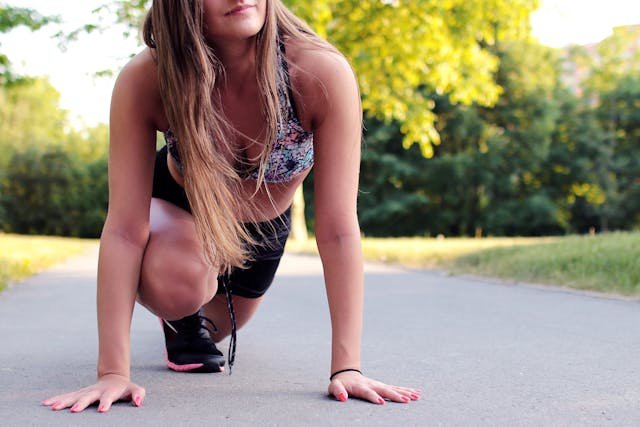Hey there, lovely! Let’s talk about something that can truly elevate your self-care routine: homemade face masks. In a world where we’re constantly bombarded with products claiming to be the miracle solution for our skin, it can be overwhelming to find what really works for us.
That’s where the beauty of DIY comes in! Making your own face masks not only allows you to customize the ingredients to suit your unique skin needs, but it also gives you a chance to connect with nature and embrace the simplicity of self-care. I remember the first time I whipped up a mask in my kitchen; it felt like a little spa day right at home!
The best part? You know exactly what’s going on your skin, and you can feel good about using fresh, natural ingredients. Homemade face masks are not just a trend; they’re a wonderful way to nourish your skin while indulging in a little “me time.” Whether you’re looking to hydrate, exfoliate, or brighten your complexion, there’s a recipe out there just waiting for you to discover it.
Plus, making these masks can be a fun activity to share with friends or family. Imagine gathering your loved ones for a cozy night in, mixing up some delightful concoctions, and pampering yourselves with the fruits of your labor. It’s all about creating moments of joy and relaxation while treating your skin with the love it deserves.
Key Takeaways
- Homemade face masks are a natural and cost-effective way to improve skin health and appearance.
- Using homemade face masks can help to hydrate, exfoliate, and nourish the skin, leading to a healthier complexion.
- It’s important to choose ingredients that are suitable for your specific skin type to maximize the benefits of homemade face masks.
- There are numerous DIY recipes for homemade face masks using ingredients like honey, yogurt, avocado, and oatmeal.
- Following step-by-step instructions for making and applying the face mask can ensure the best results and effectiveness.
Benefits of Using Homemade Face Masks
Complete Control Over Ingredients
Using homemade face masks offers numerous benefits, with one of the most significant advantages being the complete control you have over the ingredients. Unlike store-bought products that often contain preservatives and artificial additives, homemade masks allow you to choose fresh, organic components that are gentle on your skin. This means fewer chances of irritation or allergic reactions, which is especially important for those with sensitive skin.
Natural Ingredients for a Healthier Skin
Many people have experienced the positive effects of using natural ingredients in their homemade face masks. For instance, ingredients like honey and avocado can have a nourishing effect on the skin, making it feel like you’re giving your skin a gentle hug. This natural approach to skincare can lead to healthier and more radiant skin.
Cost-Effectiveness and Reduced Waste
Another fantastic benefit of DIY face masks is their cost-effectiveness. By using ingredients you likely already have in your pantry or fridge, you can save money while still treating yourself to high-quality skincare. Many of these ingredients have multiple uses, so you can whip up a mask and then use the leftovers in your morning smoothie or as part of your cooking. This approach encourages minimizing waste while maximizing value.
Promoting Mindfulness and Self-Care
Homemade face masks also encourage mindfulness and self-care. Taking the time to create and apply a mask can be a beautiful ritual that helps you unwind and reconnect with yourself amidst life’s hustle and bustle. This mindful approach to skincare can have a positive impact on both your skin and your overall well-being.
Choosing the Right Ingredients for Your Skin Type

When it comes to homemade face masks, choosing the right ingredients is key to achieving the best results for your skin type. First things first, take a moment to assess your skin’s needs. Is it dry and flaky? Oily and prone to breakouts? Or perhaps sensitive and easily irritated? Understanding your skin type will guide you in selecting the most beneficial ingredients. For instance, if you have dry skin, you might want to incorporate hydrating elements like yogurt or aloe vera, which are known for their moisturizing properties. On the other hand, if you’re dealing with oily skin, ingredients like clay or lemon juice can help absorb excess oil and reduce shine. It’s also essential to consider any specific concerns you may have, such as acne, aging, or dullness. For example, if you’re looking to combat acne, adding tea tree oil or honey can provide antibacterial benefits while soothing inflammation. If you’re aiming for a brightening effect, consider using turmeric or papaya, both of which are known for their skin-brightening properties. Remember, it’s all about listening to your skin and giving it what it craves. I’ve had my fair share of trial and error when it comes to finding the right combinations, but that’s part of the fun! Don’t be afraid to experiment and discover what works best for you.
DIY Recipes for Homemade Face Masks
Now that we’ve covered the importance of choosing the right ingredients, let’s get into some delightful DIY recipes for homemade face masks! One of my all-time favorites is a simple honey and oatmeal mask. To make this mask, combine two tablespoons of oatmeal with one tablespoon of honey and enough water to create a paste.
Oatmeal is fantastic for soothing irritated skin, while honey provides hydration and has antibacterial properties. Apply this mask for about 15-20 minutes before rinsing off with warm water for a soft and glowing complexion. Another wonderful recipe is a banana and yogurt mask that works wonders for dry skin.
Mash half a ripe banana and mix it with two tablespoons of plain yogurt. Bananas are rich in vitamins and minerals that nourish the skin, while yogurt contains lactic acid that gently exfoliates and hydrates. Apply this creamy concoction for 15-20 minutes, then rinse off to reveal a plump and radiant complexion.
These recipes are not only easy to make but also incredibly effective! Feel free to get creative by adding your favorite essential oils or other ingredients that resonate with you.
Step-by-Step Instructions for Making and Applying the Face Mask
Making and applying your homemade face mask is an enjoyable process that can easily become part of your self-care routine. Start by gathering all your ingredients and tools—this could include a mixing bowl, spoon, and measuring cups. Once you have everything ready, follow these simple steps: First, measure out the required amounts of each ingredient according to your chosen recipe.
Next, mix them together until you achieve a smooth consistency; this is where you can really get creative! If you find the mixture too thick, feel free to add a splash of water or a few drops of oil until it reaches your desired texture. Once your mask is ready, it’s time for application!
Begin by cleansing your face thoroughly to remove any makeup or impurities—this step is crucial for allowing the mask to penetrate effectively. Using clean fingers or a brush, apply an even layer of the mask onto your face while avoiding the eye area. Take a moment to breathe deeply and enjoy this mindful experience; perhaps play some calming music or light a candle to set the mood.
Allow the mask to sit for 15-20 minutes before rinsing it off with warm water. Pat your face dry gently with a clean towel and follow up with your favorite moisturizer to lock in all that goodness!
Tips for Maximizing the Effectiveness of Your Homemade Face Mask

Preparing Your Skin for a Face Mask
To truly maximize the effectiveness of your homemade face mask, there are a few tips and tricks that can enhance your experience. First off, consider steaming your face before applying the mask. This simple step opens up your pores and allows for better absorption of the nutrients from the mask. You can do this by leaning over a bowl of hot water (be careful not to get too close!) or using a warm towel on your face for a few minutes.
Enhancing the Experience with Facial Massage
Another great tip is to incorporate facial massage while applying your mask. Gently massaging your face not only feels divine but also promotes circulation and helps the mask penetrate deeper into your skin. Use upward strokes and focus on areas that need extra attention—like around your cheeks or forehead.
The Importance of Hydration in Self-Care
Lastly, don’t forget about hydration! Drinking plenty of water before and after applying your mask will help keep your skin plump and radiant from within. Remember, self-care is all about nurturing yourself holistically!
Precautions and Potential Allergens to Avoid
While homemade face masks can be incredibly beneficial, it’s essential to be mindful of potential allergens and precautions before diving in. Always perform a patch test before applying any new ingredient to your face—this simple step can save you from unwanted irritation or allergic reactions. To do this, apply a small amount of the mixture on a discreet area of skin (like behind your ear) and wait 24 hours to see if any redness or discomfort occurs.
Additionally, be cautious with certain ingredients that may not suit everyone’s skin type. For example, citrus fruits like lemon can be too harsh for sensitive skin due to their acidity; instead, opt for gentler alternatives like cucumber or aloe vera if you’re prone to irritation. It’s also wise to avoid using any expired ingredients or those that have been sitting in your pantry for too long—freshness is key when it comes to skincare!
Trust me; taking these precautions will ensure that your DIY skincare journey remains enjoyable and safe.
Conclusion and Final Thoughts on Homemade Face Masks
As we wrap up our delightful journey into the world of homemade face masks, I hope you feel inspired to embrace this beautiful form of self-care! There’s something so empowering about creating something tailored just for you—something that nourishes not only your skin but also your spirit. Remember that skincare is not just about looking good; it’s about feeling good too!
So take those moments for yourself; indulge in the process of mixing up those natural ingredients and applying them with love. Incorporating homemade face masks into your routine doesn’t have to be complicated or time-consuming; it can be as simple as setting aside some time each week to pamper yourself with nature’s goodness. So go ahead—experiment with different recipes, enjoy the process, and celebrate the unique beauty that is YOU!
Your skin will thank you for it, and who knows? You might just discover new favorites along the way! Happy masking!
If you’re interested in enhancing your skincare routine beyond the homemade face mask for glowing skin, consider exploring other natural skincare solutions. A related article that might catch your interest is about the benefits of incorporating natural ingredients into your skincare regimen. You can read more about it and get insightful tips by visiting this detailed guide on natural skincare ingredients. This article provides a comprehensive look at how various natural components can benefit your skin health, complementing your homemade face mask efforts.
FAQs
What are the benefits of using a homemade face mask for glowing skin?
Using a homemade face mask can help to improve the overall appearance and health of your skin. It can help to hydrate, exfoliate, and nourish the skin, leading to a more radiant and glowing complexion.
What are some common ingredients used in homemade face masks for glowing skin?
Common ingredients used in homemade face masks for glowing skin include honey, yogurt, avocado, oatmeal, turmeric, aloe vera, and various fruits such as strawberries, bananas, and papayas.
How often should I use a homemade face mask for glowing skin?
It is generally recommended to use a homemade face mask for glowing skin 1-2 times per week. Overuse of face masks can potentially irritate the skin, so it’s important to use them in moderation.
Are there any potential risks or side effects of using a homemade face mask for glowing skin?
While homemade face masks are generally safe to use, there is a risk of allergic reactions or skin irritation, especially if you have sensitive skin. It’s important to patch test any new ingredients before applying a face mask to your entire face.
Can a homemade face mask replace professional skincare treatments?
Homemade face masks can be a beneficial addition to a skincare routine, but they are not a replacement for professional skincare treatments. For specific skin concerns, it’s best to consult with a dermatologist or skincare professional.








